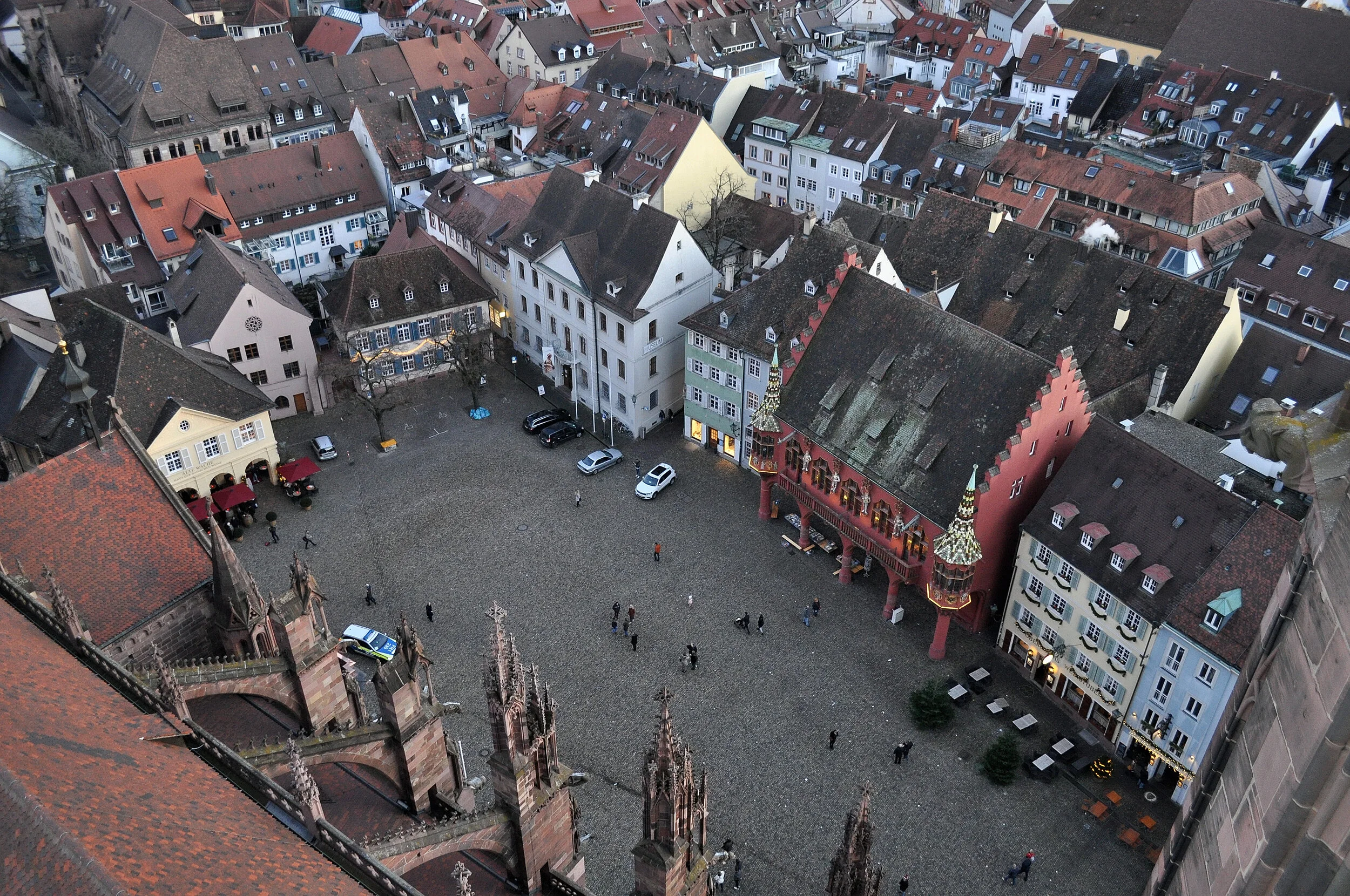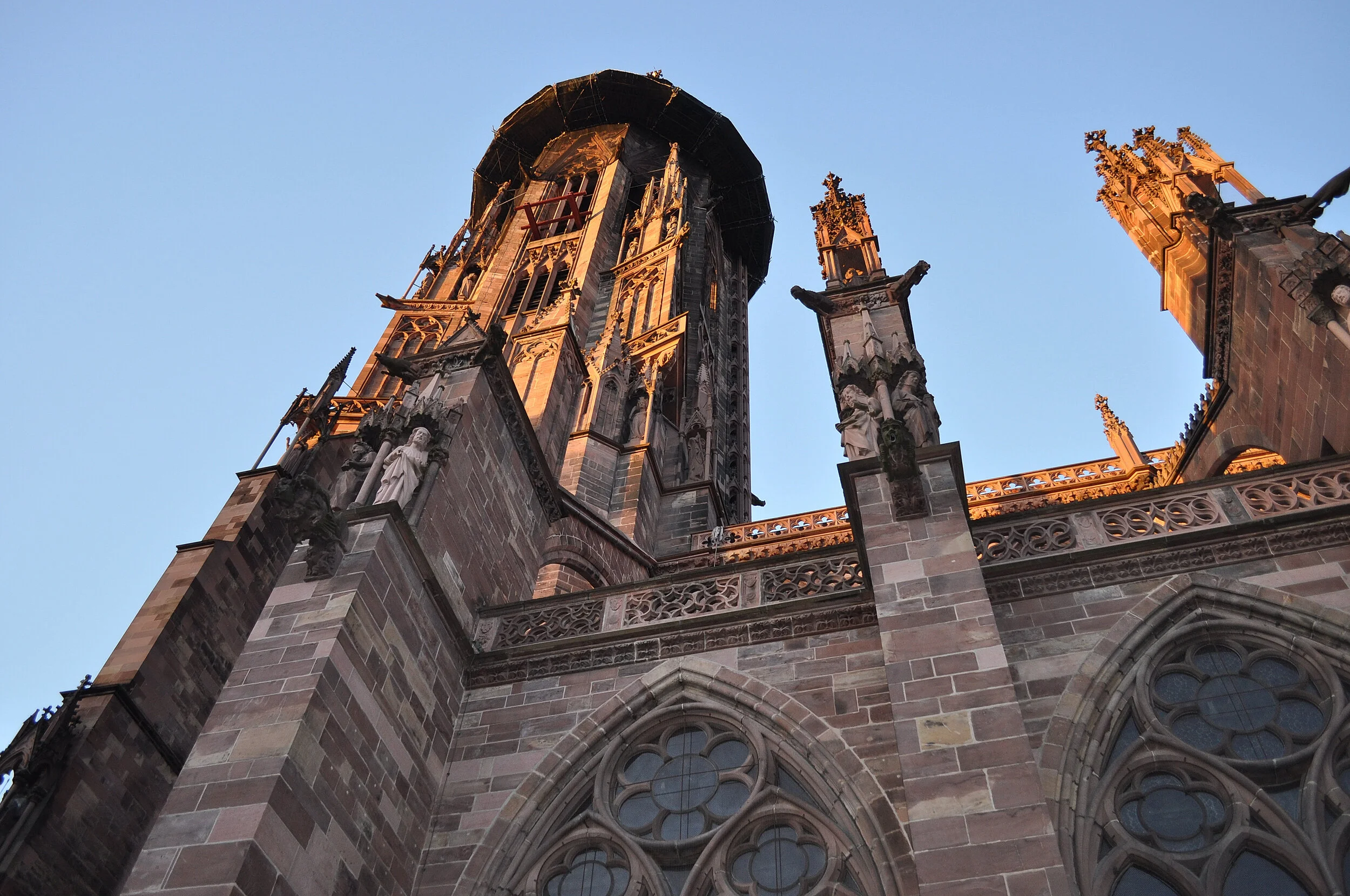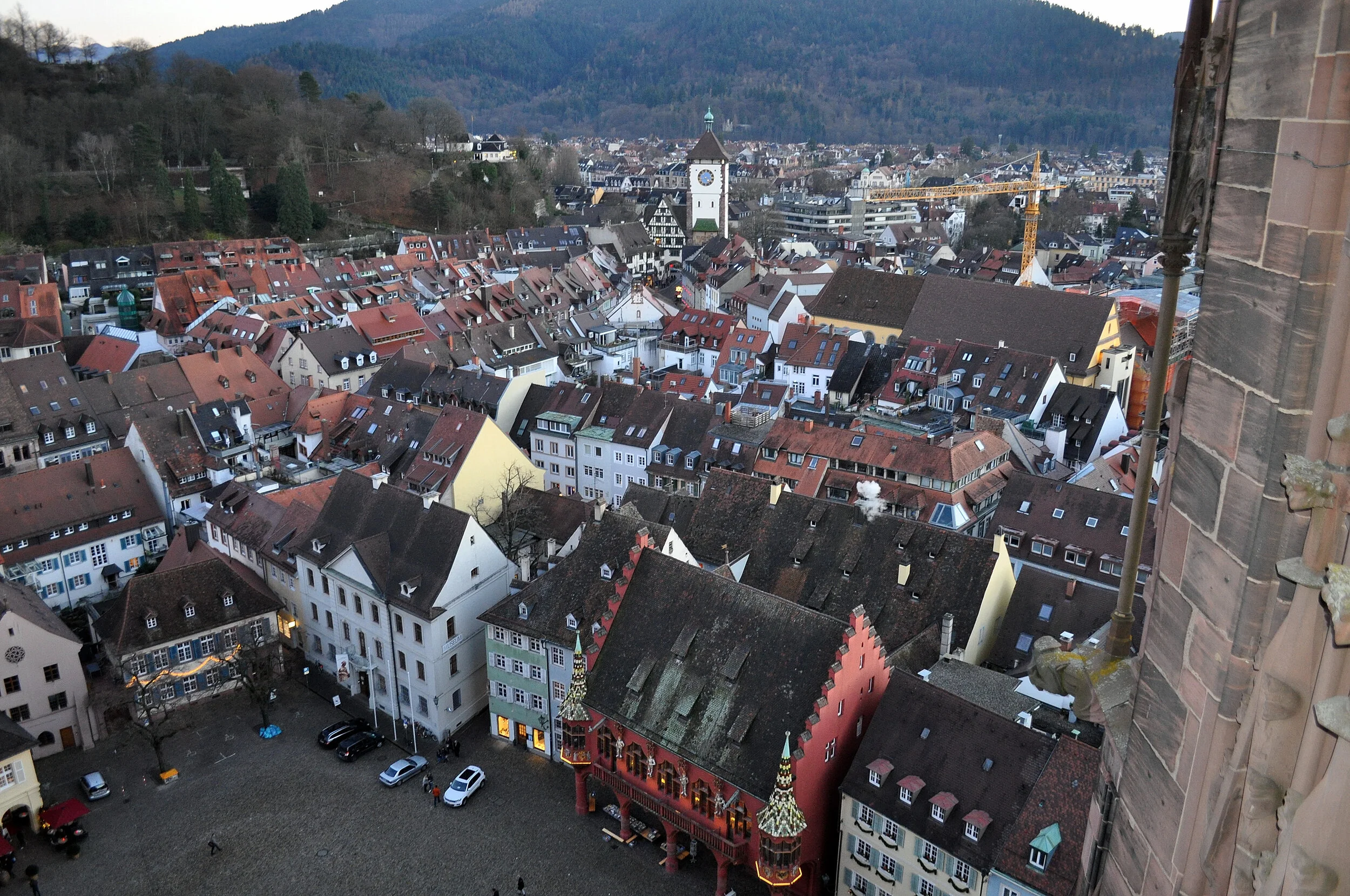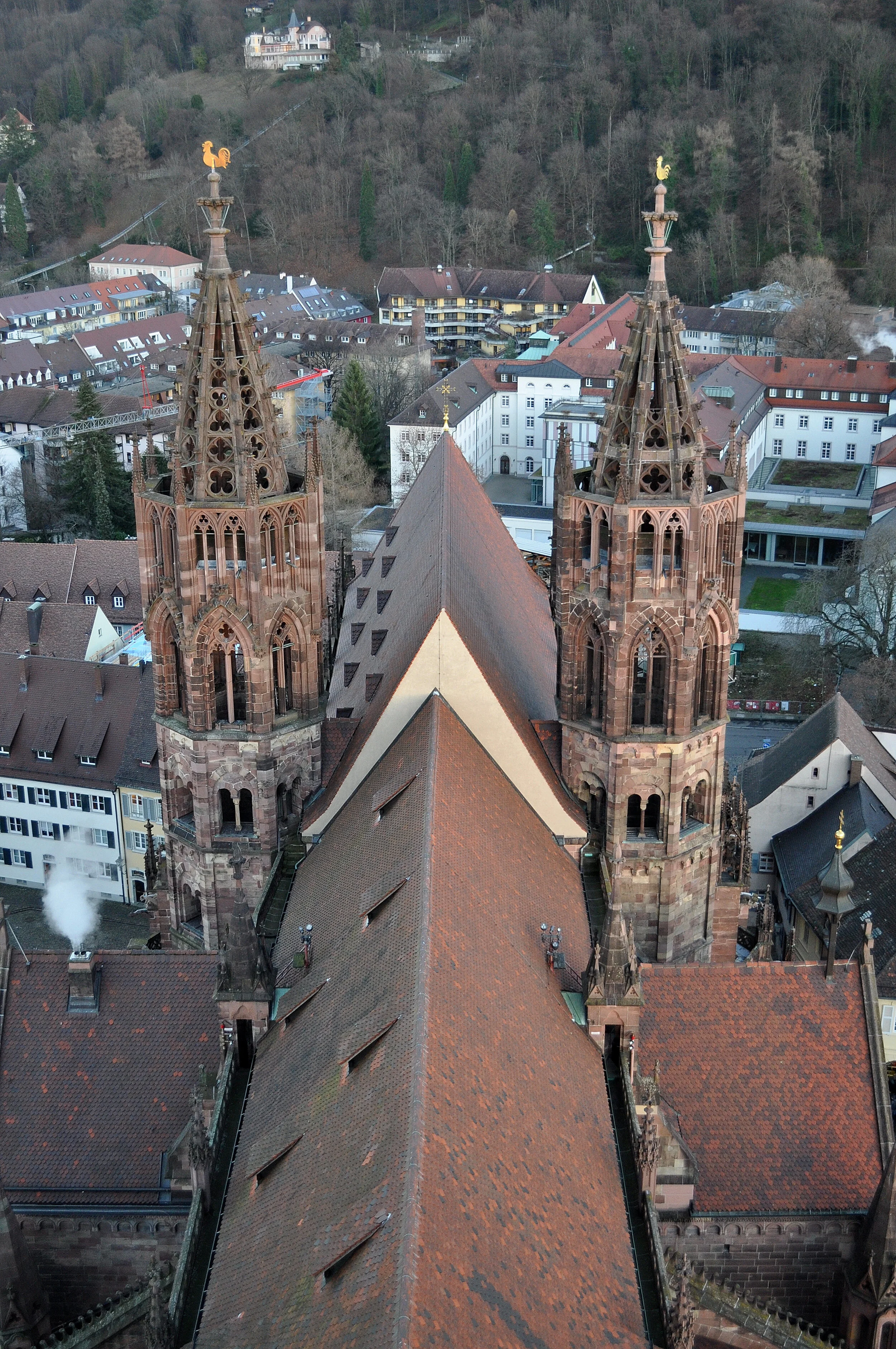On the way to Freiburg
Angela: for our first time on board the van, we decide to leave very early in the morning, around 7 am — we have about 400 kilometers to cover.
Piero: It’s basically all highway; we stop just before the Chiasso border for a quick break: we grab a coffee and, most importantly, buy the vignette required for Swiss highways, then we’re off again.
Angela: the trip is comfortable, passing through the stunning landscapes of the Swiss Alps, continuing until the Lake of the Four Cantons at Lucerne, and we leave Switzerland shortly after Basel.
Piero: at this point, Freiburg is less than an hour away, about 70 kilometers; we drive along the Rhine with the Black Forest in the distance on the other side, and arrive just before lunch.
Angela: our first parking spot with the van isn’t the easiest, but we manage. Finally, we’re ready for our first walk in Freiburg!
Piero: Freiburg im Breisgau is a small city in the south of Baden-Württemberg. It lies just a few kilometers from the borders with Switzerland and, especially, France. It is situated at the edge of a volcanic area and enjoys a particularly favorable climate, so much so that the surrounding areas are famous for wine production. The western districts are located on the plain of the Rhine valley, while the eastern districts rest on the slopes of the first hills of the Black Forest. The city is crossed by the Dreisam River, which originates in the Black Forest and flows into the Elz River, which in turn flows into the Rhine.
Angela: Freiburg was already a Roman colony, but it was officially founded by the Duke of Zähringen with the construction of the castle in 1120. The city grew quickly thanks to its strategic position, close to important trade routes and France. The silver mines in the Black Forest made Freiburg a very important center for coin minting — the coins were highly prized because of their metal content. After a period of decline, the city regained importance under the Habsburgs, eventually becoming a significant imperial city.
Piero: in 1457, Archduke Albert VI founded the important University of Freiburg, and in the 17th century Freiburg became the western capital of the Habsburg Empire, a testament to its importance. Over the following centuries, the town changed hands multiple times between the French and the Austrians, until it became an important city during the Nazi regime.
Angela: in 1945, the city was almost completely destroyed by World War II bombings. This began a long period of reconstruction aimed at restoring the city in its original medieval style.
Piero: today Freiburg owes much of its importance to the renowned Albert Ludwig University, the first in Germany to admit women at the beginning of the last century; beyond its academic center, Freiburg is a popular tourist destination in Breisgau.
Angela: after the long journey, we need a good lunch to recover our energy. Nothing better than a classic brewery! We choose Hausbrauerei Feierling — the beer is exquisite, the service a bit rough, but the sausages served in broth are wonderful…
Piero: the break also helped us warm up: despite Freiburg being one of the sunniest cities with the mildest climate in Germany, this time of year is really cold, and the proximity to the Black Forest is definitely felt!
Angela: we dedicate the entire afternoon to exploring the medieval city center.
Piero: our tour begins at the Martinstor, the Gate of St. Martin, built in 1202, located on Kaiser-Joseph-Strasse, a commercial street running through the Old Town. On the facade facing the center, there is a plaque dedicated to three women who were burned as witches in 1599.
Angela: right after, we reach the Cathedral Square. Münsterplatz, the German name for the cobblestone square that opens in front of Freiburg Cathedral, hosts the daily city market and numerous outdoor cafés. Several colorful buildings overlook the square, many of which were rebuilt after World War II. Among these, the historic merchants’ hall, the Historisches Kaufhaus, stands out with its deep red facade and distinctive turrets on the corners.
Piero: the Notre-Dame Cathedral of Freiburg is the most important monument in the city and one of the few buildings that survived the bombings of World War II. Its construction took nearly 300 years, from the 13th to the 16th century. Absolutely stunning is its bell tower, which reaches a height of 116 meters.
Angela: We decide to climb up, facing the effort of nearly 400 steps to reach the panoramic viewpoint of the tower. It is definitely worth it!
Piero: we continue our walk, being careful not to fall into the numerous little canals running alongside the sidewalks of Freiburg: the Bächle are one of the distinctive features of the city center. This water distribution system dates back to the 13th century and was used to supply water to homes and as a reserve in case of fire. The water comes from the Dreisam river and is distributed by gravity, as the city is built on a slope. Tradition says that anyone who falls into these canals will marry someone from Freiburg. Since we've already had our share of weddings, we continue our walk calmly...
Angela: we dedicate the remaining time to the city's second gate, the Schwabentor, the Swabian Gate, built in the 13th century. To emphasize the city's commercial importance at the time, the depiction of a salt merchant and his cart adorns the side of the gate facing the city, while on the outer side stands Saint George, the patron saint of Freiburg, slaying the dragon.
Piero: one last curiosity before leaving Freiburg: did you know that here is the oldest hotel in all of Germany?
Angela: it’s the Zum Roten Bären, dating back to 1120, and it’s not only the oldest guesthouse in Germany but in all of Europe.
Piero: speaking of the hotel, it’s time to pick up our van and head to our accommodation.
Angela: for our base throughout the tour, we chose the Schwarzwaldhotel Stollen in Gutach, still in the Breisgau region. It’s a typical local building, nestled in the Black Forest. A bit eerie arriving there in the dark, but overall cozy thanks to the family management.
Piero: watch out for the carpet — it’s everywhere!
Angela: we end our day with a typical dinner of noodles in broth: pure bliss!













